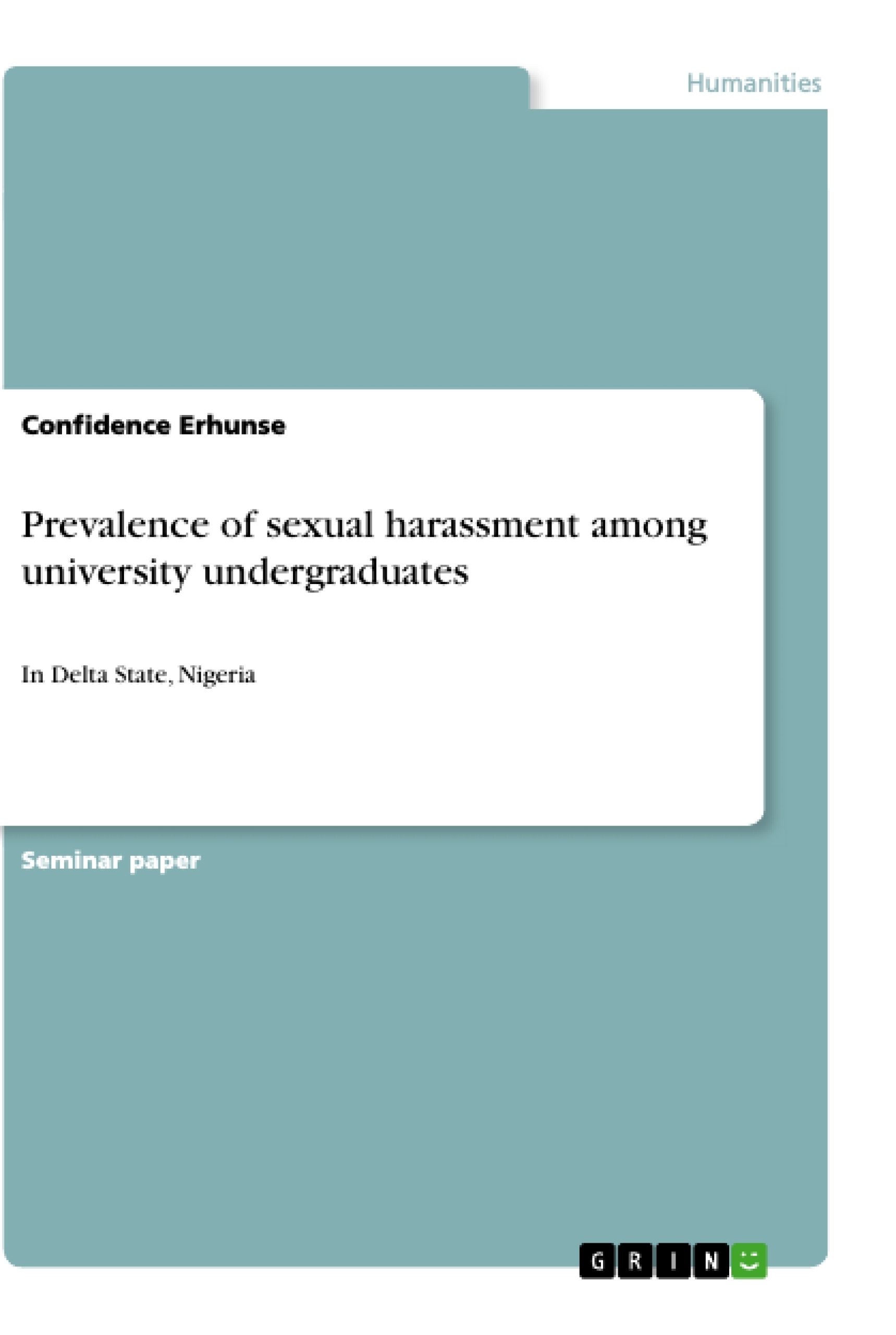This study investigated the prevalence of sexual harassment among University Undergraduates of Delta State University, Abraka, Nigeria. Three research questions were raised and one null hypothesis was formulated to guide the study. The research design was a descriptive survey. A population of 92 undergraduates was used for the study. The instrument for data collection was a structured questionnaire titled “Prevalence of Sexual Harassment among University Undergraduate".
The mean ratings and standard deviations were employed to answer the research questions and t-test was used to test the hypothesis. The major findings of the study was that there was no significance difference between female and male undergraduate likely to experience sexual harassment in Delta State University Abraka. It was recommended among other things that guidance counsellors, educational psychologists and significant others should establish more effective and workable strategies in tackling sexual harassment among university undergraduates.
Inhaltsverzeichnis (Table of Contents)
- INTRODUCTION
- Purpose of Study
- Research Questions
- Research Hypotheses
- Methods
- Presentation of Results
- Research Hypotheses
- Discussion of Findings
- Conclusions
- Recommendations
- REFERENCES
Zielsetzung und Themenschwerpunkte (Objectives and Key Themes)
This study explores the prevalence of sexual harassment among university undergraduates in Delta State University, Abraka, Nigeria. The research aims to understand the nature and extent of sexual harassment experiences among these students, providing valuable insights into the issue within the university environment.
- Prevalence of sexual harassment among university undergraduates in Delta State University, Abraka, Nigeria
- Perceptions of sexual harassment among male and female undergraduates
- Factors contributing to the prevalence of sexual harassment
- Reporting practices and the reluctance of victims to report experiences
- Strategies for addressing and preventing sexual harassment in the university setting
Zusammenfassung der Kapitel (Chapter Summaries)
- Introduction: This chapter provides a definition of sexual harassment and explores its various forms, highlighting the complexities of identifying unwelcome behavior. It discusses the prevalence of sexual harassment in university settings and the specific challenges faced by students.
- Methods: This section details the research design, including the population, sampling methods, data collection instruments, and statistical analysis techniques employed in the study.
- Presentation of Results: This chapter presents the findings of the study, highlighting key statistics and trends related to the prevalence of sexual harassment among the surveyed undergraduates.
- Discussion of Findings: This section provides an in-depth analysis of the study findings, exploring the significance of the results and their implications for understanding the nature and extent of sexual harassment among university students in the studied location.
Schlüsselwörter (Keywords)
The main keywords and focus topics of this study are sexual harassment, prevalence, university undergraduates, Delta State University, Abraka, Nigeria. The study delves into the understanding of sexual harassment experiences, reporting rates, and potential strategies for combating this issue within the university environment.
- Citar trabajo
- Confidence Erhunse (Autor), 2019, Prevalence of sexual harassment among university undergraduates, Múnich, GRIN Verlag, https://www.grin.com/document/505269



